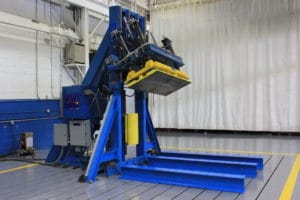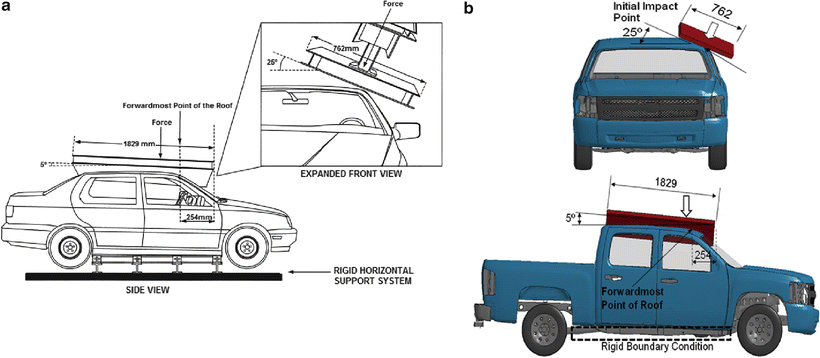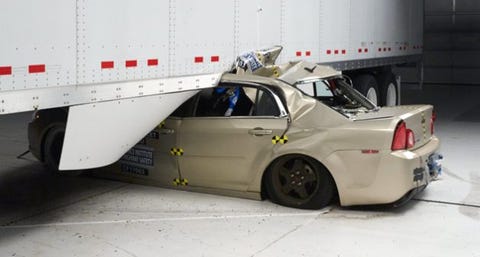49 cfr parts 571 and 585216 as part of a comprehensive plan for reducing the risk of rollover crashes and the risk of death and serious injury in those crashes this final rule upgrades the agency s safety standard on roof crush resistance in several ways.
Nhtsa roof crush testing machine.
The measure of roof strength was obtained from nhtsa s office of vehicle safety research roof crush test data.
The tesla model s performed so well in nhtsa crash tests that it earned a 5 4 out of five stars and broke the roof crush machine in the process.
A frontal crash is the most common type of crash resulting in fatalities.
Federal motor vehicle safety standards.
The roof crushing machine gave out at 4 gs.
The roof of its model s electric sedan is apparently so strong.
The model years of the tested vehicles ranged from 1997 through 2008.
And tesla adds in its announcement that during a previous roof crush test used during validation the machine failed while applying more than 4 g s of pressure the same as stacking four of the.
Then when the nhtsa tried to test the roof crush protection the model s broke the machine.
The focus of this paper is to present and discuss the results of the roof crush rollover testing that was.
Roof crush resistance 222 13 kb final rule.
As crash test boasts go tesla is claiming a good one.
Improved roof crush rollover protection a summary of nhtsa s activities in these four motorcoach safety priority areas along with research results obtained thus far is discussed in the 2009 esv paper by prasad et al1.
Supplemental notice of proposed rulemaking snprm.
Roof crush strength was just one of the reasons that tesla says its electric car just came up with a five star rating in national highway traffic safety administration testing.
Tesla was also quick to note that none of its lithium ion.
The model s may well have bested the scores of a heavier class of vehicle were it not for the fact that the car busted some of the nhtsa s equipment during testing.
Roof crush testing of one side of the vehicle one sided testing was performed from april 2001 through march 2008 on 75 passenger vehicles.
Major strides have been made in frontal protection thanks in large part to the crash test program that the national highway traffic safety administration nhtsa began in the late 1970s and the crashworthiness evaluations that iihs began in 1995.








